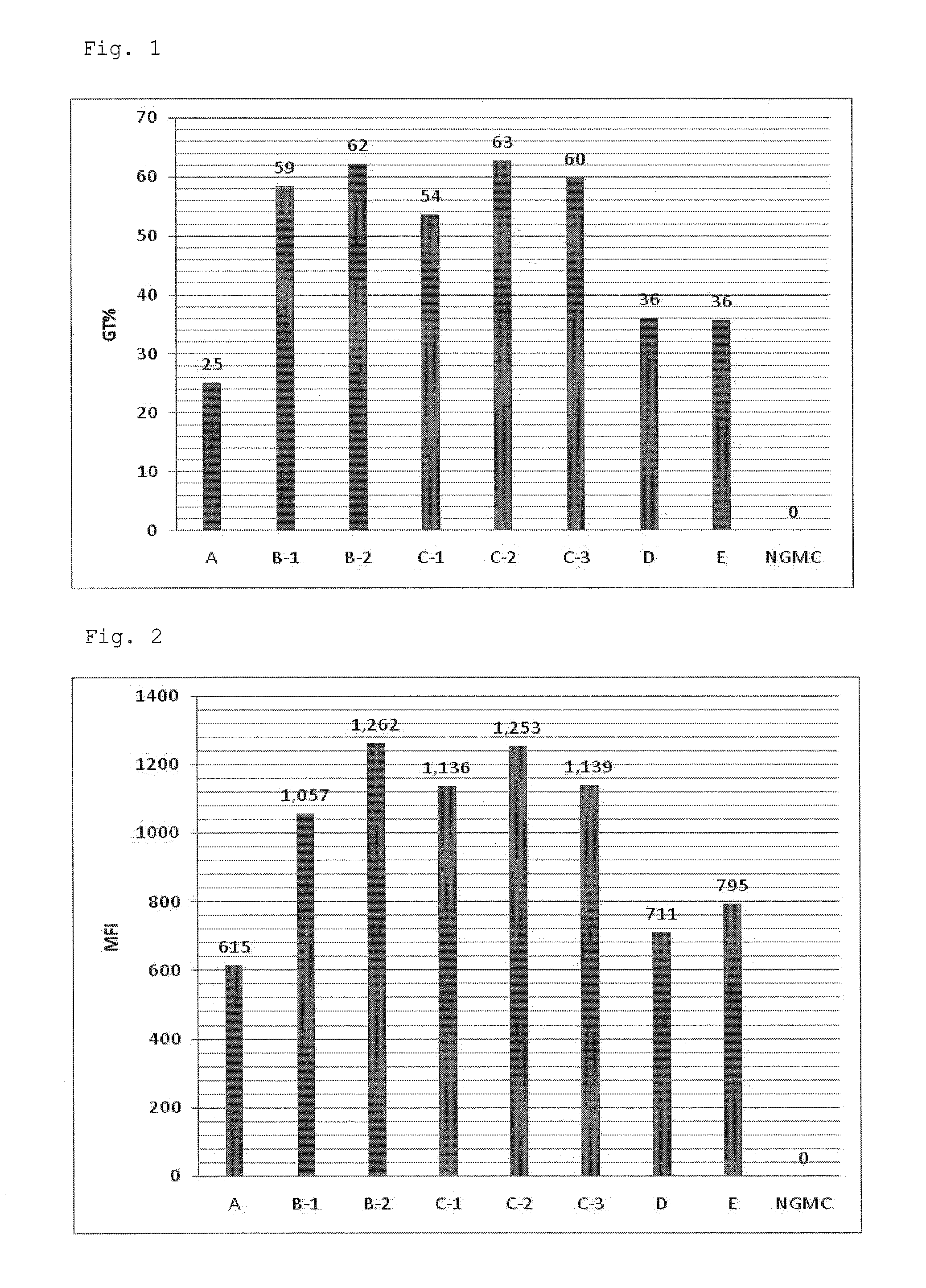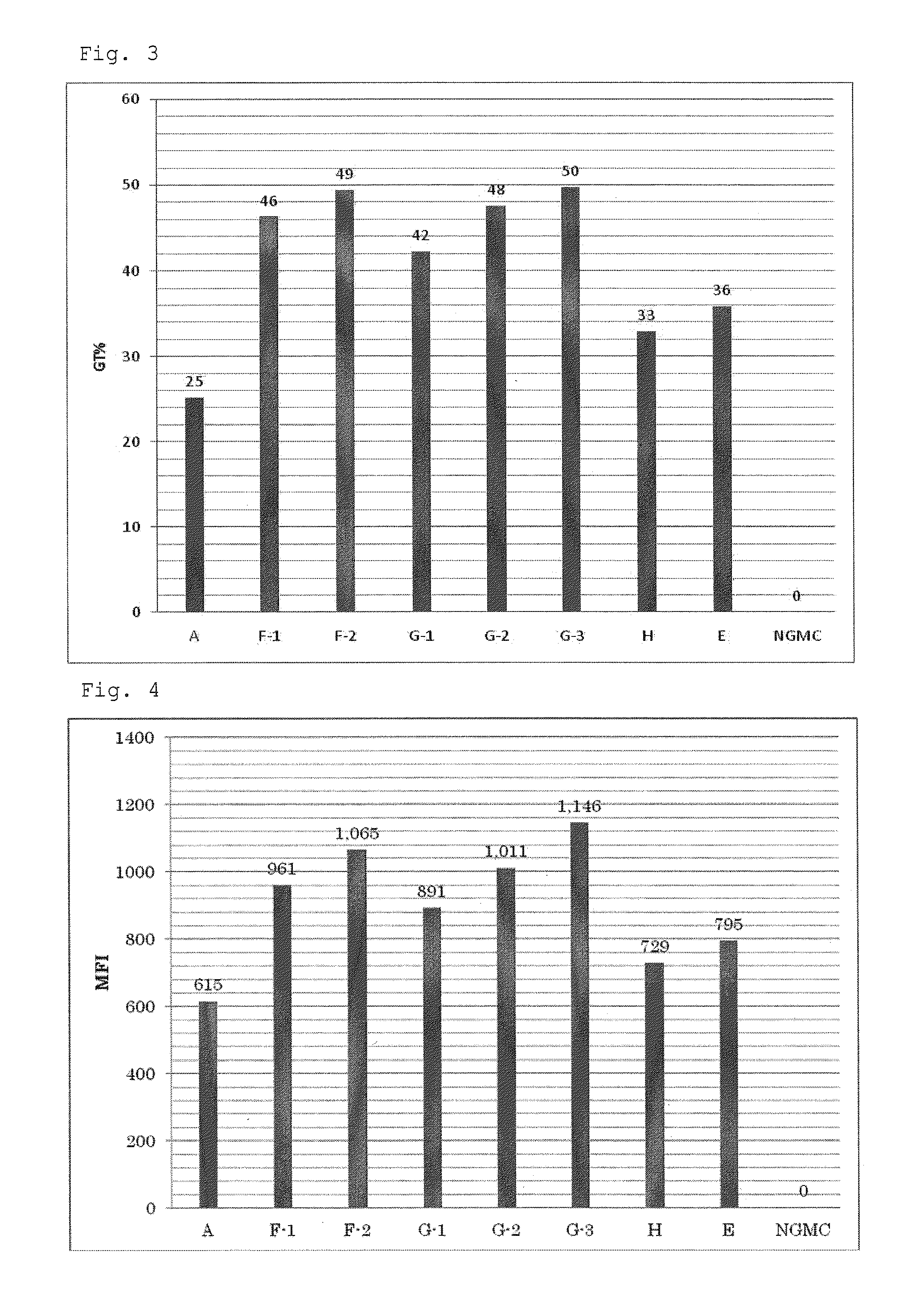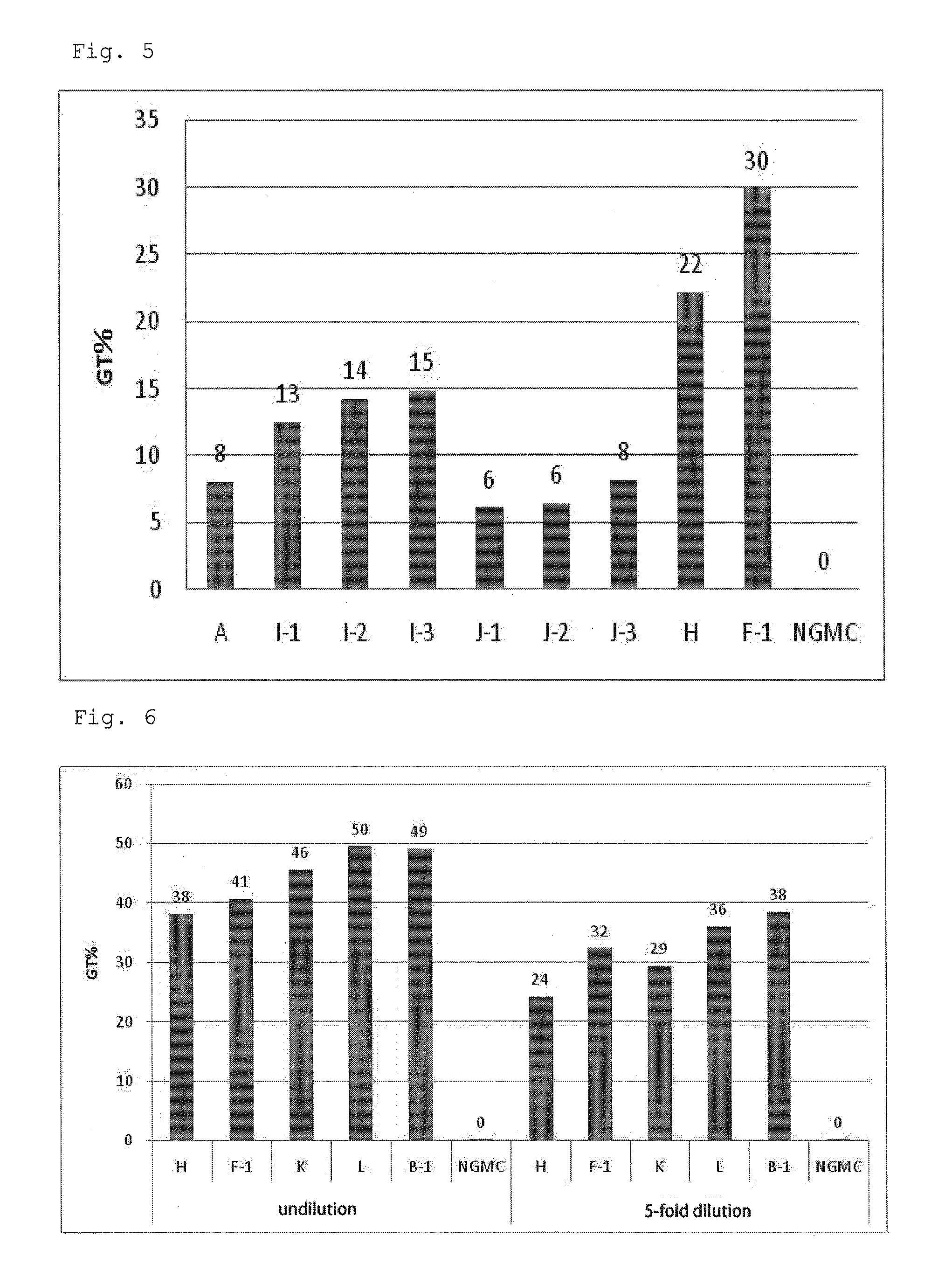Method for producing virus vector
a virus and vector technology, applied in the field of virus vector production, can solve the problems of not producing remarkable effects of known methods, and achieve the effects of high viral titer, high gene transduction efficiency, and high viral titer
- Summary
- Abstract
- Description
- Claims
- Application Information
AI Technical Summary
Benefits of technology
Problems solved by technology
Method used
Image
Examples
example 1
Preparation of Trichostatin A-supplemented Culture Medium
[0067]A serum-free culture medium for culture of virus producer cells, GT-T-Retrol (manufactured by TAKARA BIO INC., hereinafter, referred to as Retrol) was used as a basal medium A (culture medium A). To the culture medium A were added retinoic acid (ATRA) (manufactured by Wako Pure Chemical Industries, Ltd.) at final concentrations of 10 nM and 100 nM, and trichostatin A (TSA) (manufactured by Sigma) at a final concentration of 500 nM to prepare culture media B-1 and B-2 respectively (hereinafter, referred to as a culture medium group B). Furthermore, to the culture medium B-1 was added a fatty acid concentrate (manufactured by Gibco, hereinafter, referred to as lipid) at volume ratios (V / V) of 1 / 100, 1 / 250 and 1 / 1000 to prepare culture media C-1, C-2 and C-3 respectively (hereinafter, referred to as a culture medium group C). In addition, a culture medium D which was the culture medium A supplemented with only TSA (final co...
example 2
1. Culture of Retrovirus Producer Cell
[0069]A working cell bank (WCB) of a retrovirus producer cell capable of producing a mouse-derived recombinant retrovirus vector carrying a fluorescent reporter protein (ZsGreen) gene (PG13: ATCC CRL-10686 was used as a packaging cell) was thawed in a water bath at 37° C. The cell solution thus thawed was put into a 15 mL centrifuging tube. After addition of 10 mL of a complete medium [a DMEM medium (manufactured by Gibco) containing 10% fetal bovine serum (10% FBS, manufactured by SAFC Biosciences)], the tube was subjected to centrifugation (500×g, 5 minutes, 20° C.). After the centrifugation, a supernatant was removed, and the cells were suspended in 10 mL of the complete medium and then counted. After cell counting, the cell suspension was adjusted with the complete medium to 78.5×104 cells / mL. To a 100 mm dish for cell culture (manufactured by IWAKI) were added 1 mL of the cell suspension and 14.7 mL of the complete medium. The cell culture ...
example 3
Preparation of NaB-supplemented Culture Medium
[0077]To the culture medium A as described in Example 1 were added ATRA at final concentrations of 10 nM and 100 nM, and sodium butyrate (NaB) at a final concentration of 5 mM to prepare culture media F-1 and F-2 respectively. Furthermore, to the culture medium F was added the lipid at volume ratios (V / V) of 1 / 100, 1 / 250 and 1 / 1000 to prepare culture media G-1, G-2 and G-3 respectively. In addition, a culture medium H which was the culture medium A supplemented with only NaB (final concentration: 5 mM), and a culture medium E which was the culture medium A supplemented with only ATRA (final concentration: 10 nM) were prepared. The composition of each culture medium is shown in Table 2.
[0078]
TABLE 2Culture mediumATRANaBlipid (V / V)A———F-1Group F10 nM5 mM—F-2100 nM 5 mM—G-1Group G10 nM5 mM1 / 100G-210 nM5 mM1 / 250G-310 nM5 mM 1 / 1000H—5 mM—E10 nM——
PUM
| Property | Measurement | Unit |
|---|---|---|
| humidity | aaaaa | aaaaa |
| humidity | aaaaa | aaaaa |
| temperature | aaaaa | aaaaa |
Abstract
Description
Claims
Application Information
 Login to View More
Login to View More - R&D
- Intellectual Property
- Life Sciences
- Materials
- Tech Scout
- Unparalleled Data Quality
- Higher Quality Content
- 60% Fewer Hallucinations
Browse by: Latest US Patents, China's latest patents, Technical Efficacy Thesaurus, Application Domain, Technology Topic, Popular Technical Reports.
© 2025 PatSnap. All rights reserved.Legal|Privacy policy|Modern Slavery Act Transparency Statement|Sitemap|About US| Contact US: help@patsnap.com



